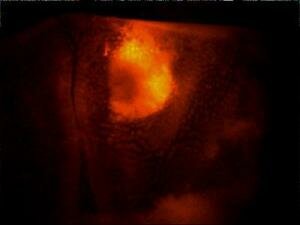Fluorescent Compounds Make Tumors Glow
A series of novel imaging agents could light up tumors as they begin to form - before they turn deadly - and signal their transition to aggressive cancers.
The compounds - fluorescent inhibitors of the enzyme cyclooxygenase-2 (COX-2) - could have broad applications for detecting tumors earlier, monitoring a tumor's transition from pre-malignancy to more aggressive growth, and defining tumor margins during surgical removal.
"We're very excited about these new agents and are moving forward to develop them for human clinical trials," said Lawrence Marnett, Ph.D., the leader of the Vanderbilt University team that developed the compounds, which are described in the May 1 issue of Cancer Research.
COX-2 is an attractive target for molecular imaging. It's not found in most normal tissues, and then it is "turned on" in inflammatory lesions and tumors, Marnett explained.
"COX-2 is expressed at the earliest stages of pre-malignancy - in pre-malignant lesions, but not in surrounding normal tissue - and as a tumor grows and becomes increasingly malignant, COX-2 levels go up," Marnett said.
Compounds that bind selectively to COX-2 - and carry a fluorescent marker - should act as "beacons" for tumor cells and for inflammation.
Marnett and his colleagues previously demonstrated that fluorescent COX-2 inhibitors - which they have now dubbed "fluorocoxibs" - were useful probes for protein binding, but their early molecules were not appropriate for cellular or in vivo imaging.
"It was a real challenge to make a compound that is COX-2 selective (doesn't bind to the related COX-1 enzyme), has desirable fluorescence properties, and gets to the tissue in vivo," Marnett said.

"Mice bearing the mutation that causes familial adenomatous polyposis in human beings (Min mice) develop small intestinal tumors that express COX-2. Fluorocoxib injection into Min mice lights up an intestinal polyp. (Credit: Lawrence Marnett, Ph.D., and colleagues)"
Source: Vanderbilt University Medical Center
|